When my partner told me that he wanted to quit his job and start an architecture consultancy, it was an exciting milestone. But none of us could have predicted that three months after he did it, there would be a worldwide pandemic.
Business came to a screeching halt, and we knew we had to focus our efforts. We decided to start with email marketing, a proven channel that would give us flexibility in how we communicated with leads and customers. Of course, before we could email anyone, we needed an email list. And to build an email list, we needed something valuable to offer subscribers.
That something is called a lead magnet.
What is a lead magnet?
A lead magnet is a piece of content or some other perk that attracts potential customers to your business—enough that they’ll give you their email address in exchange for it. Once you’ve gotten their contact information, you can then use your lead generation funnel to turn those leads into customers.
4 steps to creating lead magnets that convert
I’ll walk you through how we did it, and I hope you can take inspiration to build your own lead magnet funnel and nurture workflow.
-
Understand your customers’ pain points
-
Build valuable content to help solve those problems
-
Create an enticing opt-in
-
Segment your leads to personalize the experience
1. Understand your customers’ pain points
It’s your responsibility to understand the problems your customers are experiencing. If you don’t already have a buyer persona, now’s a great time to develop one. You’ll do this based on:
2. Create valuable content to help solve those problems
Once you know your customers’ pain points, help them find the answers they’re looking for. Do some keyword research, and write content (usually in the form of blog posts) that targets those keywords and offers valuable insights for the readers. Google knows good content marketing from bad content marketing, so you need to create in-depth, authoritative content to support your target audience.
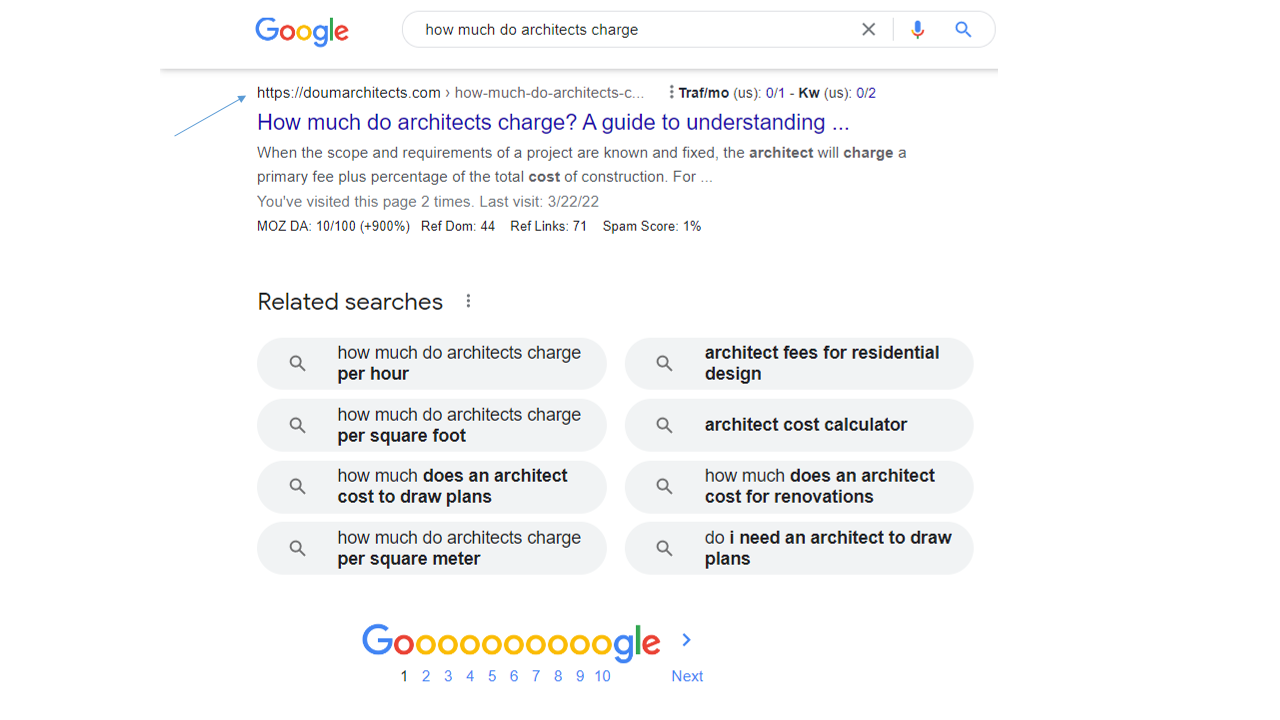
Here’s a blog post I wrote for my partner’s company ranking for a key search term.
The kind of content you produce depends on where in the customer journey your intended audience is. For example, we’re targeting folks who are building their own home or commercial property. So our content starts from buying land right up to the building and maintenance stages.
Many of our competitors just have a website with a portfolio of their work because they believe that the work will speak for itself. That may work for big-name agencies to an extent, but especially if you’re a smaller operation, you have to build credibility and trust. Showcasing your understanding of your audience’s questions and concerns before they even ask builds that trust—and if you do your SEO due diligence, it will get them to your website.
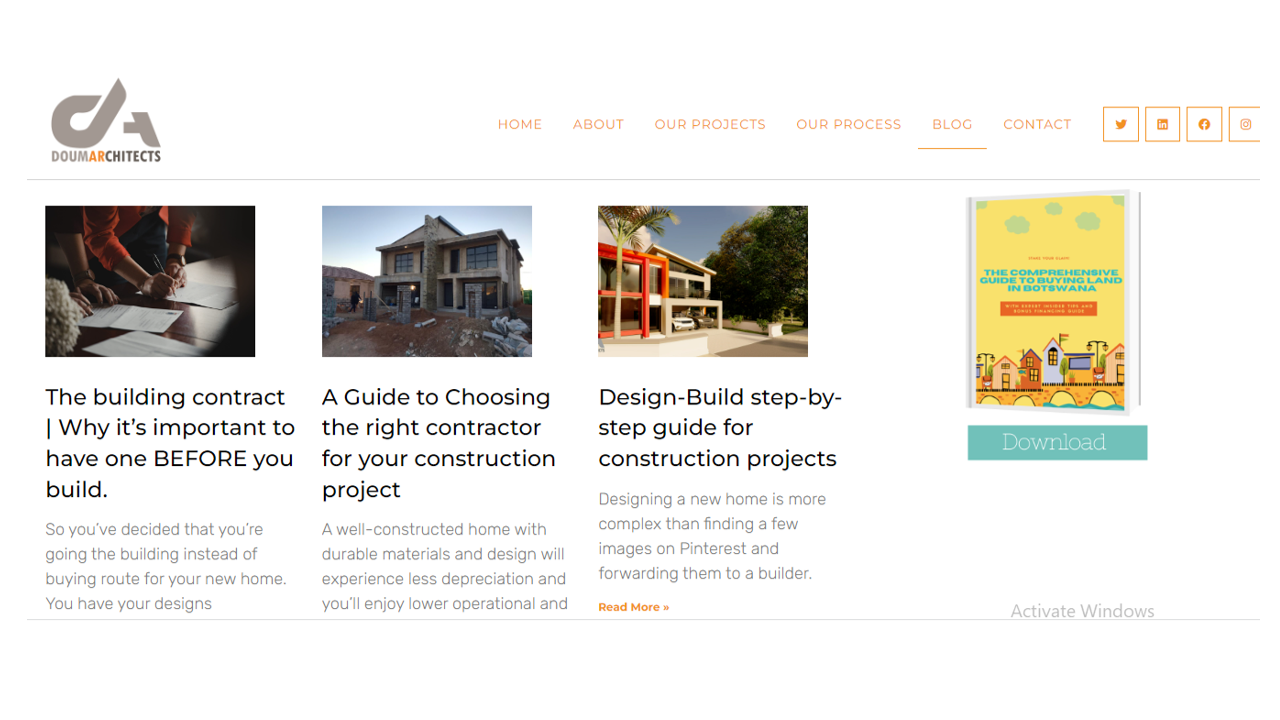
Pro-tip: In addition to writing blog posts, we also optimized our Google My Business page. This is the low-hanging fruit that gets us discovered with the “architect near me” search.
3. Create an enticing opt-in
Getting people to your website is the first step. Once they’re there, you need to get them to give you their email address. And that means you need to give them something even more valuable than an answer to their Google search: your lead magnet.
Because almost anything can be considered a lead magnet if you’re using it to get prospects’ contact information, you need to narrow the scope of what you plan to offer.
Lead magnet ideas
-
Gated content ( Interactive eBooks, checklists, whitepapers, templates, etc.)
-
A discount on their first purchase
-
Early access to exclusive deals
-
A free short consultation
-
An exclusive webinar or other event
-
Access to a stream of exclusive content
-
Samples of your product
-
Access to a proprietary tool related to your industry
-
Membership in an exclusive online community
Whatever you provide needs to be catered specifically to your audience, based on what they would find valuable enough to exchange their email for.
For example, it didn’t make sense for us to offer a discount because we’d need a certain amount of information before we could even give them a quote.
We knew our prospective clients are looking to be informed about the entire process they’re getting into—folks who are building their own property want to be involved in the process and understand it deeply. So we decided to offer an in-depth eBook, which gives them comprehensive information about buying land (we even collaborated with industry partners to be sure it was up to date and relevant).
For folks who were further along in their buying journey, we also created a checklist to help them gather the documents they need and learn how to evaluate consultants before taking the next step in the design-build process. Bonus: if they book a consultation and have already reviewed the checklist, they’re way more prepared for our meeting!
Where should a lead magnet live?
Your lead magnet can live in a number of places:
-
On a dedicated landing page. A landing page gives you room to show off what the lead magnet offers and includes a clear call to action (CTA). This is where you’ll link people from other spots as well.
-
In your blog posts. Include a smaller CTA within your blog posts, so people who find your content valuable can move down the funnel to the next stage.
-
On your home page. This is for anyone who reaches you via Google My Business or another search that gets them directly to your home page. A smaller CTA will do the trick here too.
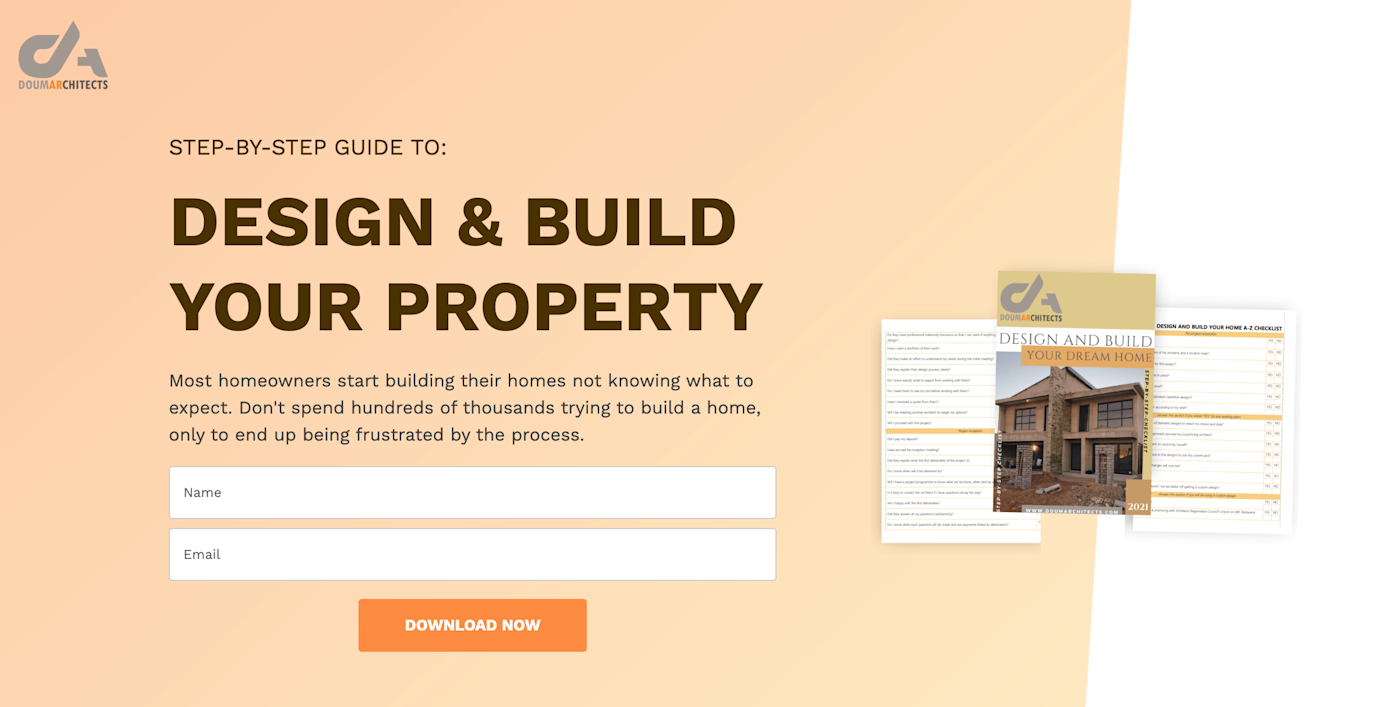
Here’s part of our lead magnet landing page. Take a look at the whole thing here.
Of course, you can’t rely on Google alone to get people to your lead magnet, so you’ll also want to think outside the box and create campaigns to promote and distribute your lead magnet. Here are some ideas to get you started:
-
Collaborate with other businesses—maybe their audience would find your content helpful, and promoting it would help both of you.
-
Set up a booth at a conference, expo, or farmer’s market, and collect email addresses in person. If you bring your computer or use a QR code, folks can sign up on your landing page, so the lead magnet gets delivered to them immediately.
-
Sponsor a popular newsletter that your target audience loves with a link to your lead magnet’s landing page.
What if people share your gated content? Once someone downloads our eBook, they’re able to share it—via email, text, whatever else—which means that people get the lead magnet without having to give us their email address. At first, that was concerning, but in reality, it’s a great thing—for two reasons. 1. It means the original downloader found it helpful enough to share, so you’re coming across as credible. 2. The people who get the content from someone else will also find it valuable and might come to you even more primed to buy than if they’d just landed on your website.
4. Segment your leads to personalize the experience
Once you have your lead’s email address, you need to do something with it. You should, of course, follow email marketing best practices (or the B2B version, if that’s your audience).
But the most important thing is to personalize the experience. And I don’t mean writing “Hi [name]” at the beginning of the email. I’m talking about email segmentation. By dividing your email list into smaller groups based on shared characteristics, you can be sure you’re emailing each person with something that’s actually relevant to them.
For example, we added a different tag to subscribers who downloaded the eBook versus the checklist. We knew those folks were at different stages in their buyer journey, so we created different email sequences for each. Then, once a lead books a consultation, they get moved into a different email sequence, and so on.
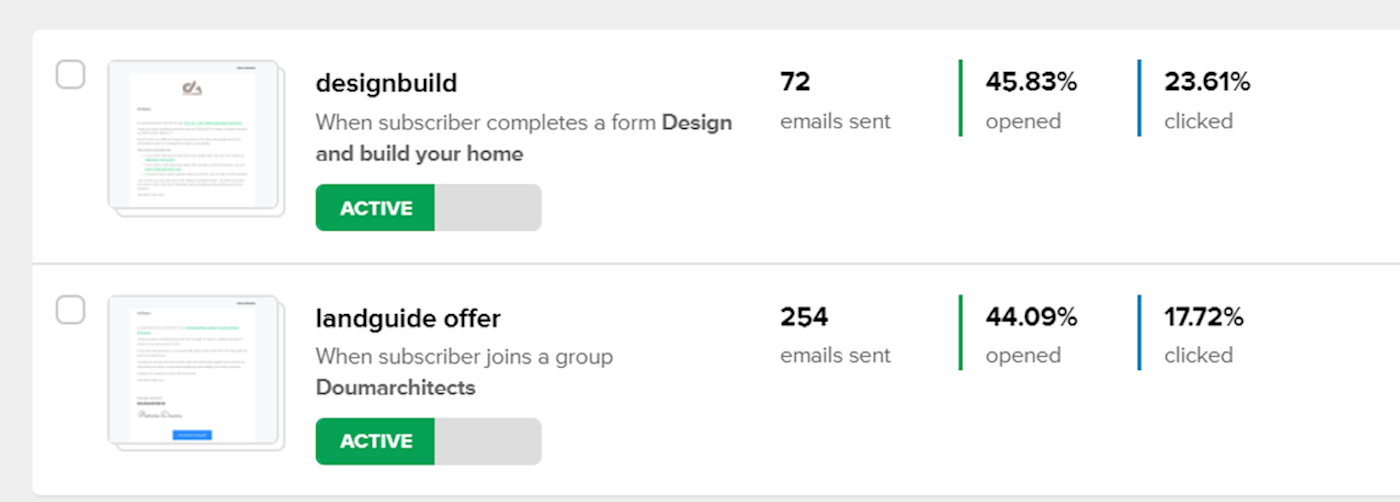
Make sure you’re being intentional with your emails—you worked hard to get that email address, but the unsubscribe button is just a click away. Each email needs to offer value and have a clear call to action. For example, some of our nurture emails offer tips and then encourage leads to reply to the email with questions. Instead of going back and forth over email, we then offer them a free consultation (that other consultants charge for).

You can get a lot of this done using automation too, so there’s not much manual work involved. Here’s how to automate your email marketing.
5. Use your lead magnet for more than attracting leads
If you created content for your lead magnet, don’t stop at just using it as a lead magnet—it can become the basis of all sorts of other marketing campaigns.
In our research, we found that the majority of our target audience listened to the lunchtime news on the radio and watched the evening news on TV. Of course, radio and TV ads are expensive, so instead, we collaborated with the host of a popular show: we gave them the content from our eBook, and they built the segment around it. In return, we got scheduled just before the lunchtime news.
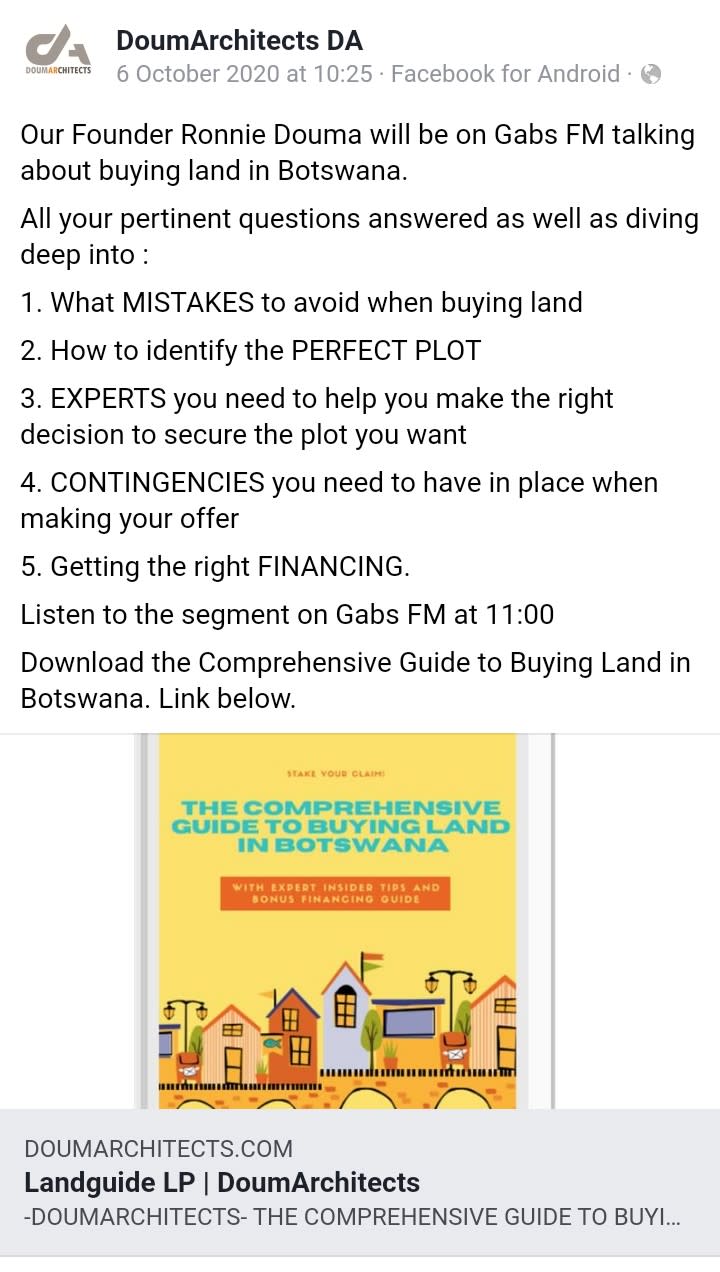
The publicity from this show got us in touch with a reporter that asked us to contribute to their column. And the snowball effect continued.
Our lead magnets saved our business
Our email list is still small, but because it was built using targeted lead magnets, it’s given us a project pipeline that helped the business become profitable during a time when we didn’t think we’d survive. And 80% of our customers come from the email list we built with our lead magnets (the rest are referrals from current and past clients). It’s worth a try.
As you develop your lead magnets and lead nurture workflow, here are some more resources that can help:
[adsanity_group align=’alignnone’ num_ads=1 num_columns=1 group_ids=’15192′]
Need Any Technology Assistance? Call Pursho @ 0731-6725516







